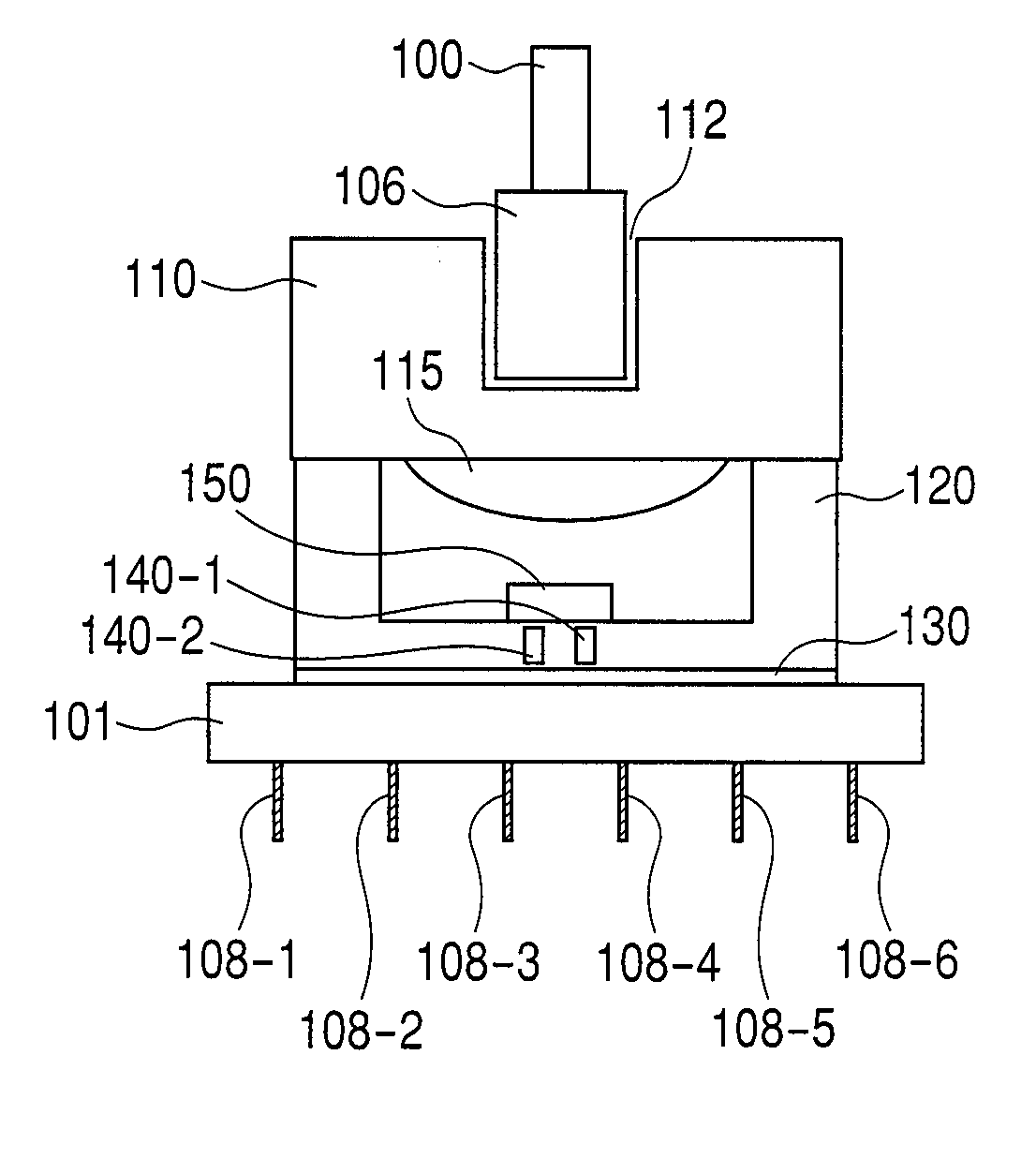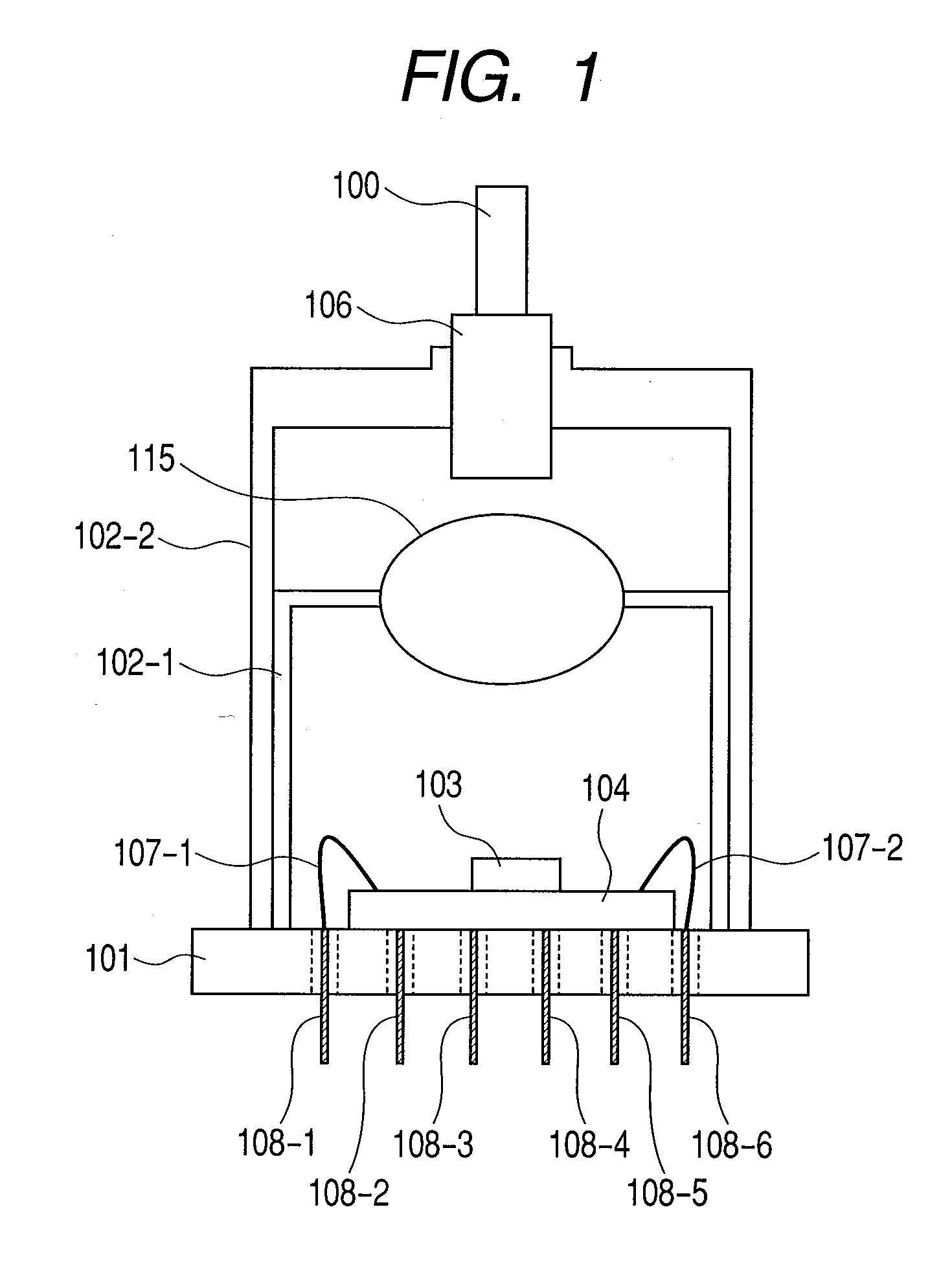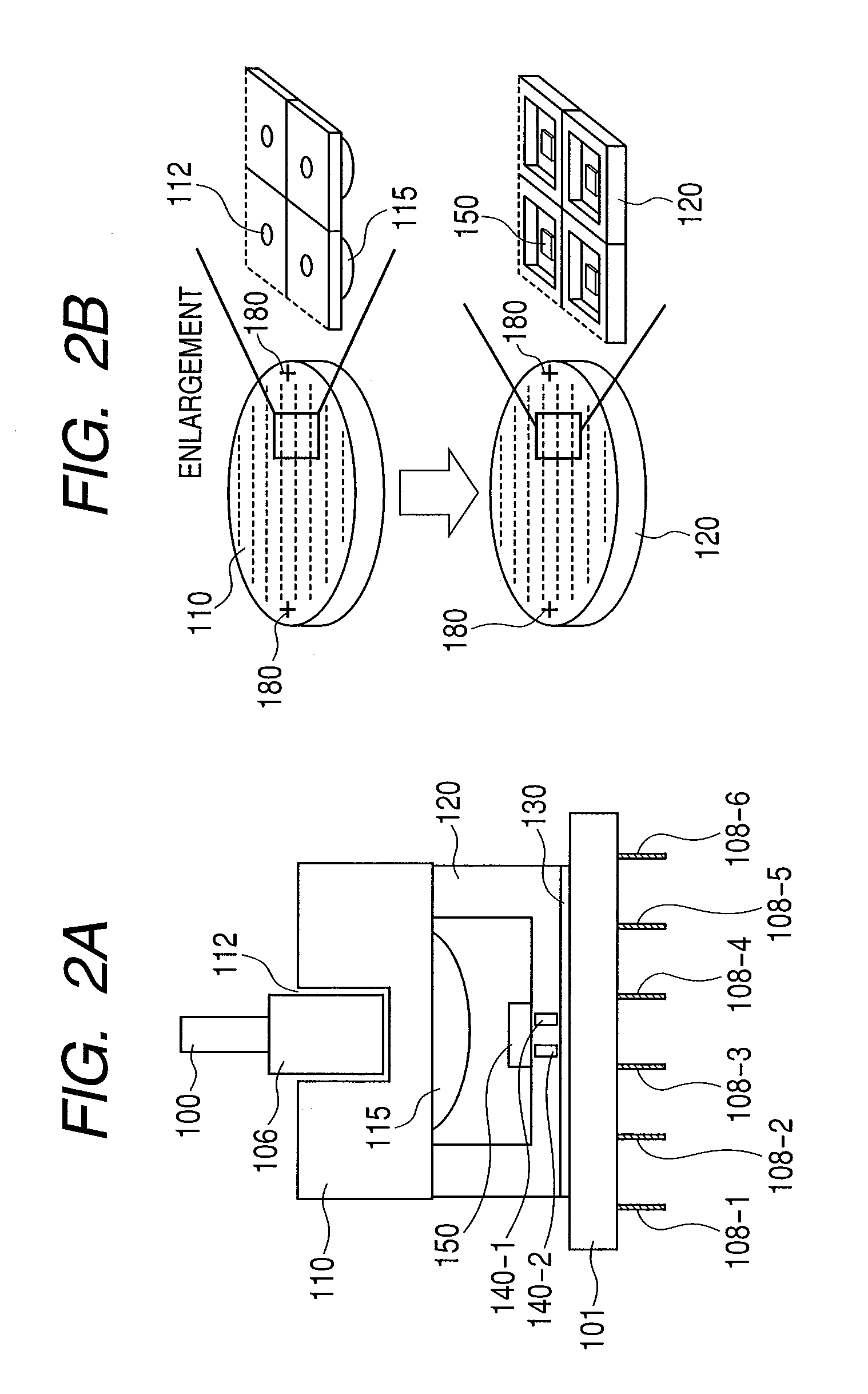Optical module and wavelength division multiplexing optical module
a technology of optical modules and optical modules, applied in the field of optical modules, can solve the problems of reducing the distance between, affecting the effect of external forces, and deteriorating over time, and achieve the effects of improving mass productivity, simplifying the sticking process, and ensuring the effect of stability
- Summary
- Abstract
- Description
- Claims
- Application Information
AI Technical Summary
Benefits of technology
Problems solved by technology
Method used
Image
Examples
first embodiment
[0046]One end of each of the pins 108 is connected electrically to an external device to transmit electrical signals into the stem 101. The other end of each of the pins 108 is connected electrically to one of the through-via holes 140 through the electric wiring 130. In this first embodiment, the flip-chip bonding method is used to connect the optical element 150 to an electrode; both are connected electrically to each other through a through-via hole 140. This flip-chip bonding method can reduce the optical module in size, as well as enables band-widening when the inductance is lowered at electric connection points respectively. In this case, a bonding wire can also be used for the connection between the through-via hole 140 and the optical element 150.
[0047]If this optical element is a laser element, the light signal output from the optical element 150 according to an electric signal is condensed by the lens 115 and guided to the optical fiber 100 through the sealing substrate 11...
second embodiment
[0054]FIG. 3 is a cross sectional view of an optical module in the present invention. This structure is that of the optical modules referred to as receptacle ones. In case of this receptacle type optical module, optical fibers having connectors respectively can be attached to or removed from the optical module. The optical module shown in FIG. 3 is provided with a part 300 referred to as a receptacle, which is fit in the fiber fitting recessed part 112 of the sealing substrate 110 shown in FIG. 2. FIG. 25 is a cross sectional view of the structure of the receptacle. The receptacle consists of a holder part 310, a sleeve 320, and an optical connector 330. The holder part 310 is made of metal or the like. The sleeve 320 holds the optical connector 330. The optical connector 330 consists of a fiber stub and a glass block. The sleeve 320 enables the ferrule 106 and the optical connector 330 to be aligned to each other precisely. With this sleeve 320, optical signals can be exchanged bet...
third embodiment
[0055]FIG. 4 is a cross sectional view of an optical module in the present invention. In this configuration of the optical module, an external lens is used as the lens 115. The groove of the optical element mounting substrate 120 is formed by etching so as to be tapered forward. This means that the spacer is formed outside the groove. This spacer can also be formed as a separate part. In this case, because the spacer might be displaced on the optical element mounting substrate, the spacer should preferably be formed as part of the optical element mounting substrate by etching, for example. The lens 115 is disposed in this groove. The inside wall of the spacer (groove) should preferably be tapered forward so as to make it easier to position the light receiving part represented by this lens 115. The lens 115 should preferably be a spherical ball lens to reduce the manufacturing cost. Because the lens 115 is spherical and the spacer is tapered forward, the lens 115 can be fit easily in...
PUM
 Login to View More
Login to View More Abstract
Description
Claims
Application Information
 Login to View More
Login to View More - R&D
- Intellectual Property
- Life Sciences
- Materials
- Tech Scout
- Unparalleled Data Quality
- Higher Quality Content
- 60% Fewer Hallucinations
Browse by: Latest US Patents, China's latest patents, Technical Efficacy Thesaurus, Application Domain, Technology Topic, Popular Technical Reports.
© 2025 PatSnap. All rights reserved.Legal|Privacy policy|Modern Slavery Act Transparency Statement|Sitemap|About US| Contact US: help@patsnap.com



